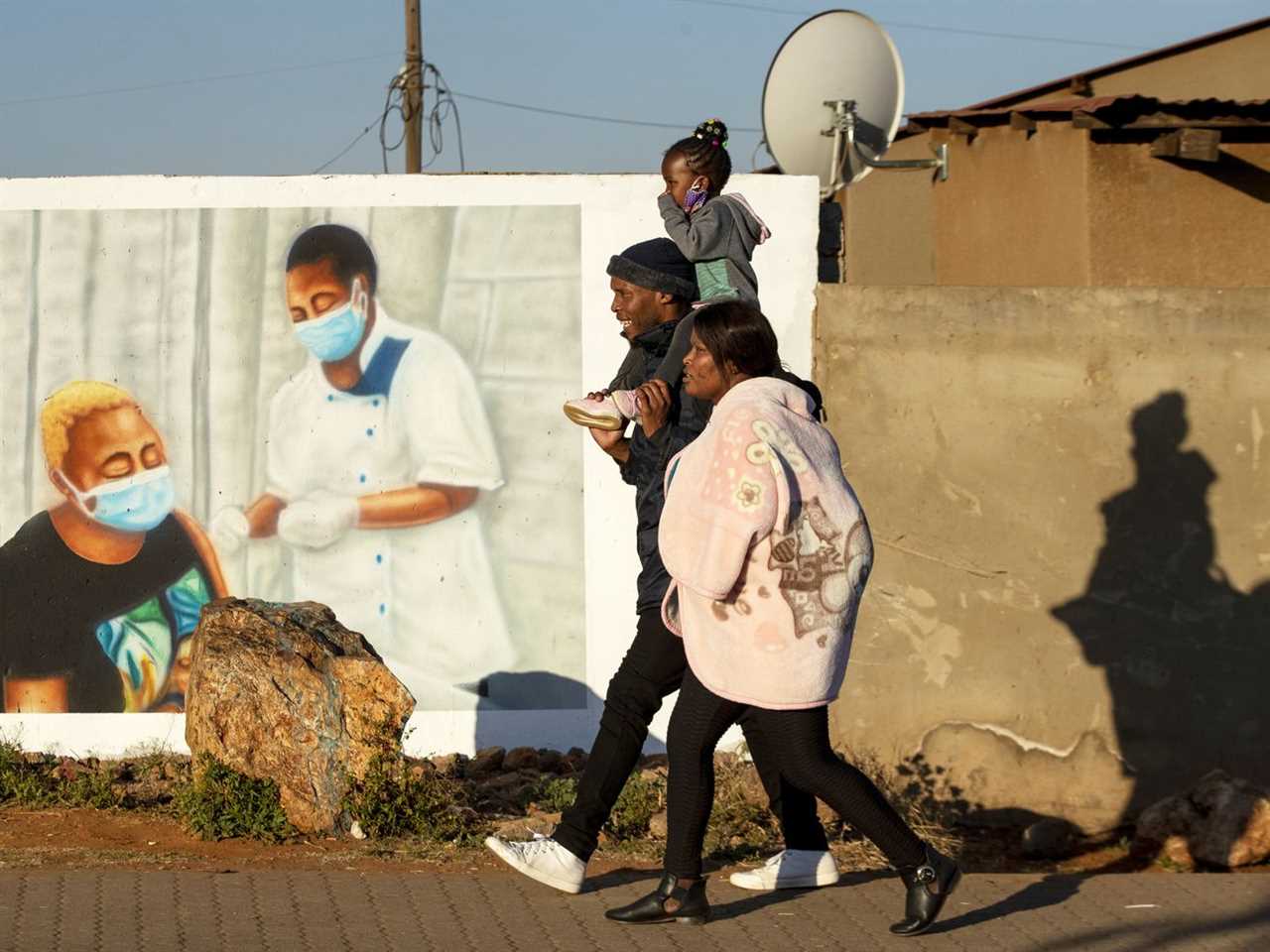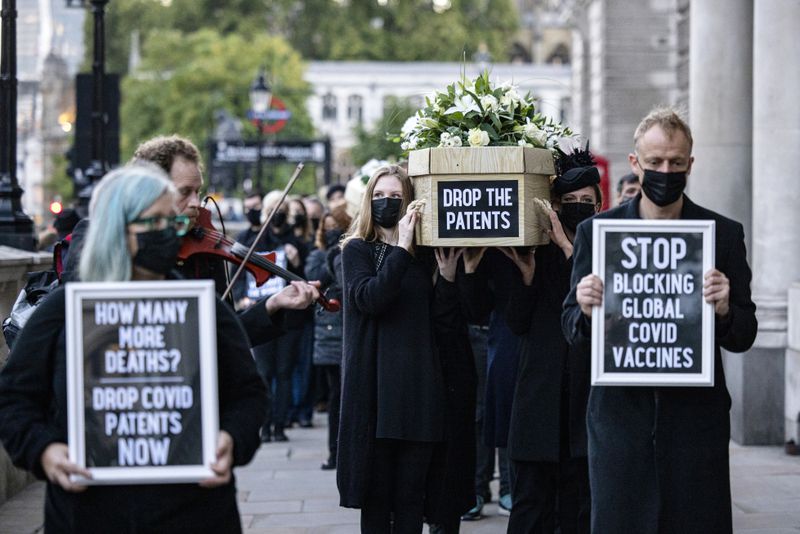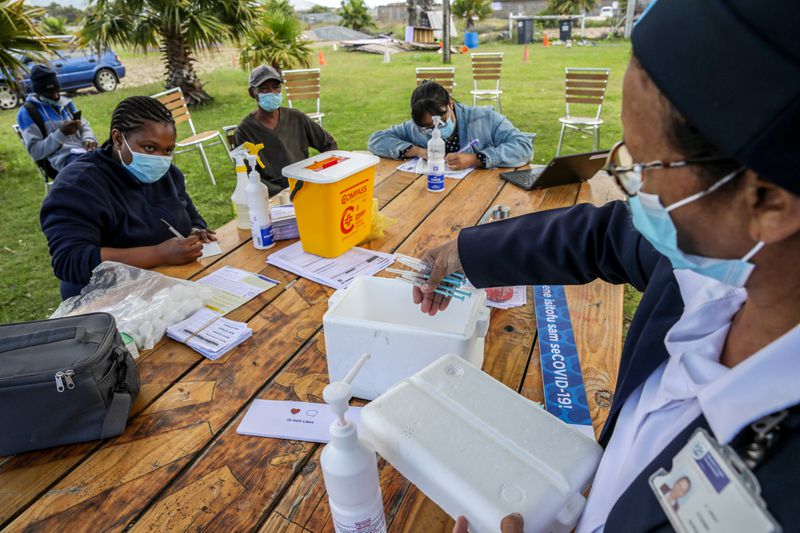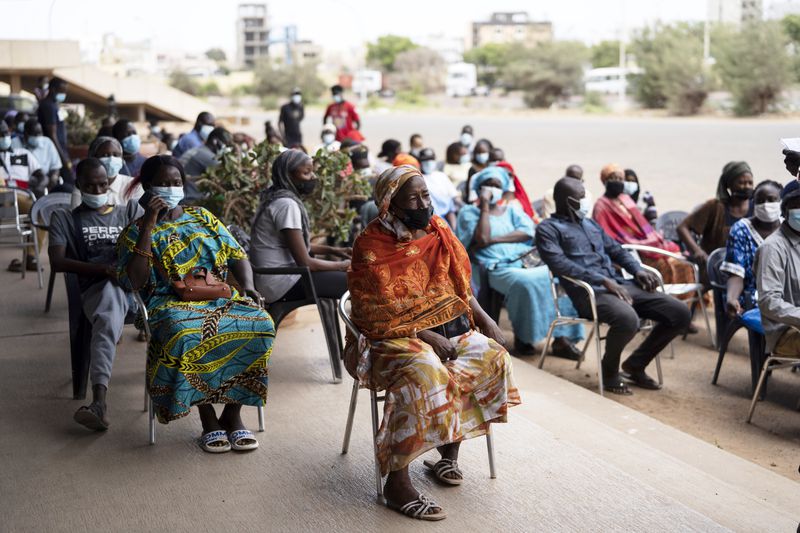
Omicron is the latest product of a global Covid-19 response that isn’t good enough.
The Centers for Disease Control and Prevention announced on Wednesday that omicron, the new coronavirus “variant of concern,” has been detected in the US. In many ways, it’s a moment of unpleasant déjà vu.
This summer, just when it seemed the United States was on the brink of returning to normal, the delta variant hit. Spreading more easily than previous variants of the novel coronavirus, delta led to devastating, deadly waves in undervaccinated areas and an increase in cases even in highly vaccinated ones. With the emergence of the omicron variant in November, the pandemic has surprised us anew — and offered a reminder of how badly the world has stumbled in the fight against the coronavirus despite vaccines now being available for almost a year.
There’s still a ton we don’t know about omicron, which the World Health Organization identified as a “variant of concern”: We don’t know whether it’s more transmissible or more dangerous than previous strains; we also don’t know how effective our vaccines are against it. Regardless of the answers to those questions, one thing is for sure: We continue to live under the conditions that allow for delta, omicron, and other variants to keep emerging.
Every new Covid-19 outbreak means new patients incubating billions of copies of the virus in their bodies. Whenever the virus makes copies of itself, it accumulates mutations. Those mutations are for the most part harmless. The thing is, if you roll the dice often enough, you’ll stumble upon a mutation that can worsen the trajectory of an outbreak or pandemic. That’s what happened with delta, and that’s what we may be in for with omicron.
The mediocre state of the world’s efforts to vaccinate everyone and reduce Covid’s spread makes this risk worse. To be sure, the fact that more than half the world’s population has received at least one shot of the vaccine is a triumph. Viewed on its own, it’s a staggering achievement considering the Pfizer and Moderna vaccines were granted emergency approval in the US less than a year ago.
But from another perspective, the vaccine effort leaves a lot to be desired. Vaccine supply is plentiful — but unevenly distributed throughout the world. In low-income countries, about 6 percent of people are vaccinated. In some cases, even where supply is plentiful, vaccine hesitancy and distributional challenges have hampered the effort to get the vaccine in arms. The result is a world that’s still prime ground for the virus to spread and mutate.
As the World Health Organization put it, “The more we allow the virus to spread, the more opportunity the virus has to change.”
But while omicron should be spurring us to belatedly buckle down on global vaccination efforts and on improving public health surveillance, communications, and pandemic preparedness worldwide, there are signs that its challenge is being met with inaction. The World Trade Organization responded to the new variant by canceling its next in-person meeting, at which waiving vaccine patents was to be discussed.
Waiving patents isn’t even the highest-impact thing we can do to get vaccines out the door, but the meeting cancellation is a grim sign the world is so far failing to heed omicron’s warning. “It is better to err on the side of caution,” Director-General Ngozi Okonjo-Iweala said of the meeting cancellation. But our ongoing failure to coordinate globally on vaccination and pandemic preparedness is the exact opposite of erring on the side of caution.

Rob Pinney/Getty Images
To reiterate, it’s too early to say much about how bad omicron will be. But if it’s not omicron, it might be another variant down the line. It’s in the interests of the international community, especially rich countries, to help get vaccines out worldwide, funding not just dose purchases but also public policy measures to improve access and uptake, ranging from distribution to technical support to public health information programs to incentives urging vaccination.
A world that falls behind on vaccinations is a world where the virus will have a greater likelihood of becoming deadlier.
How variants emerge
To understand why vaccinating as many people as possible is essential to preventing new and deadlier variants, it helps to understand how variants come about.
When a virus infects someone, it forces their cells to make billions of copies of the RNA that makes up its genetic code. For Covid-19, it’s estimated that an infected person’s body can ultimately produce between 1 billion and 100 billion copies of the coronavirus.
But the copying process isn’t quite perfect, and almost all of those billions of copies will be different from their parent virus in a few small details.
Most of the time, those differences will have no effect, or even make the virus less effective at infecting people. A metaphor might help explain why: Imagine that you have a book. Most possible random letter transpositions will make the book worse. A letter transposition that makes the book better would be exceptionally rare.
Most possible changes to the RNA of SARS-CoV-2, the virus that causes Covid-19, are probably bad for the virus with the mutation, or simply irrelevant. Early in the pandemic, there was a lot of panic over variants that turned out to be relatively harmless or not particularly different from the original SARS-CoV-2.
Eventually, though, an unlucky turn might produce some random changes to Covid-19’s genome that could make it worse for humans — more transmissible, more virulent, or more able to evade the immune protections offered by vaccines or previous infection.
“By keeping cases so high, you increase the chance that sooner or later, you’re going to hit that jackpot,” molecular epidemiologist Emma Hodcroft told my colleague Brian Resnick earlier this year. “We keep rolling the die when we keep the cases up so high.”
The latest unlucky “jackpot” may be omicron. Some early evidence suggests it’s significantly more transmissible than delta, which itself is significantly more transmissible than early variants of Covid-19. And while it’s hard to tell just from DNA analysis how the immune system will handle a variant, the numerous mutations in the spike protein in the omicron variant have some scientists worrying that preexisting immunity from vaccines or past infection might not hold up against omicron as well as we’d hope.
This will just keep happening unless the world acts
When delta first emerged, it walloped the world. Hospitals in India were overwhelmed with patients, and it’s estimated that the death toll there may have been in the range of 3 to 5 million, though official death counts are far lower. In the US, delta sparked a new wave of infections and dashed hopes for ending the pandemic that the mass availability of vaccines had prompted.
Will omicron be like that again? It is too early to venture a confident guess. But there’s definitely room for a “worse than delta” variant, and there’s some early evidence that has scientists worrying omicron might be that variant.
First, the rapid surge in the share of cases in South Africa that are omicron suggests that it might be significantly more contagious than delta. Second, the mutations in omicron suggest that it might be harder for our immune system to identify and stop.

Dwayne Senior/Bloomberg via Getty Images
Those are the two key things scientists fear could go wrong, not just with omicron but with other future variants.
“There is still space for it to move higher,” Wendy Barclay, a virologist at Imperial College London, told the BBC this summer. The R0 of the coronavirus — a measure of how many people a single case will infect in a population without immunity — was estimated at 2-3 for the original SARS-CoV-2 virus, and at 6-8 for delta. Omicron might be about the same as delta, or might be worse; we don’t know yet. Some early estimates of omicron’s contagiousness suggest it is outcompeting delta, which could mean a substantially higher R0 — and diseases do get up to some eye-popping infectiousness levels.
Consider measles. “Measles is between 14 and 30,” Barclay noted. Measles is an extraordinary outlier among diseases in terms of infectiousness. According to the CDC, measles is so infectious that the virus can live in an airspace, infecting new people, for up to two hours after an infected person leaves. If a person is infected, up to 90 percent of their close contacts are expected to also become infected (assuming none of them are immune). And infected people can spread measles to others up to four days before symptoms appear, making contact tracing really difficult.
There’s another thing that could get worse with a new variant. Existing mRNA vaccines like Pfizer and Moderna work well against variants of Covid that were spreading this summer and fall. They’re not perfect, but they seem to reduce odds of transmitting Covid-19 onward, as well as the risk of hospitalization and death. Most of their benefits have held up against every variant so far. Other vaccines like AstraZeneca and Sinopharm have held up less well, but still tolerably. (That said, immunity, especially against mild disease, does wane over time, which is why the US now encourages boosters.)
Vaccination, then, is our best tool to fight the virus. But if the international community — especially rich countries with the wherewithal to fight this pandemic — dawdles too much, a variant could eventually arise that blunts that tool. To be clear, we don’t have reason yet to think that omicron makes the vaccines less effective. But the variant shows a surprising number of novel mutations in the spike protein that the vaccines target. That might mean it makes the vaccines less effective, but we’ll have to collect data to know for sure. It’s really difficult to extrapolate the workings of the immune system just from a string of RNA.
If omicron, or some other future variant, does evade existing vaccines, the mRNA vaccine technology on which the Pfizer and Moderna vaccines are based holds out the hope that developing targeted boosters would be doable relatively quickly. That said, testing them and rolling them out would take a long time. And for large swaths of the world, the big worry is that a push to vaccinate everyone would fail to keep up with a deadly variant ripping through the world’s unvaccinated population.
How vaccinating the world can stop future variants from emerging
In high-income countries, on average, nearly 64 percent of people have been vaccinated with at least one dose. In low-income countries, about 6 percent have.
The humanitarian case for vaccinating the world is very clear: Millions of people have died of this disease, and vaccinated people are much less likely to die of it. By seriously investing in getting vaccines to everyone at risk from the virus, the world could save millions of lives, both directly, by protecting people from serious cases of Covid-19, and indirectly, by making it harder for the virus to spread and mutate.
But the vaccines that work best — and the ones that are easiest to tweak on the fly to address new variants — are the mRNA ones, which are more difficult to manufacture, transport, and store compared to other vaccines like AstraZeneca’s or Sinopharm’s, which are more widely available outside the US.

Leo Correa/AP
One thing that’s really needed is funding for building more mRNA vaccination capacity, massive preorders for the doses needed to vaccinate the world, and a concerted effort to ensure those doses reach everyone in the world. Building the factories to pump out vaccines on that scale will help the world with the next pandemic, too. The US has pledged to help vaccinate the world, but without serious investment in increasing capacity, those orders will take a long time to be filled.
It’s not just about production, either. Around the world, countries that at long last get their hands on enough vaccines have found their problem is far from solved, with logistics and distribution problems as well as hesitance common in many countries. Access in developing countries has been slowed by “over-reliance on public sector health clinics and staff to distribute vaccines,” the Center for Global Development’s Amanda Glassman told me. Public health clinics in poor countries mostly target children and women with young children, which makes them a poor tool for reaching the older people at the highest risk from Covid-19.
Meanwhile, serious policy measures to get vaccines where they’re needed and address vaccine hesitancy have been undertried, both in the US and globally — from partnerships with logistics companies to marketing to financial incentives to get vaccinated. “Development partners at least do not seem to be treating this as a time-sensitive humanitarian logistics response,” Glassman told me. “Maybe omicron will light a fire.”
If saving millions of lives worldwide is insufficient motivation for rich countries to invest in changing things, maybe the case from self-interest will be stronger. Variants are bad for everyone. Already, delta has delayed the return to normalcy that Americans long for — and killed hundreds of thousands.
The emergence of the omicron variant is the latest reminder that Covid isn’t going away, that our current countermeasures are too slow and too limited to really crush a new wave as it starts, and that there’s a desperate need to be more serious about combating the disease that has roiled our world for the last two years. The enemy is adapting — are we able to adapt, too?
----------------------------------------
By: Kelsey Piper
Title: How the faltering global vaccination effort paved the way for alarming variants
Sourced From: www.vox.com/future-perfect/22808454/omicron-global-vaccination-efforts-covid
Published Date: Wed, 01 Dec 2021 19:09:00 +0000






